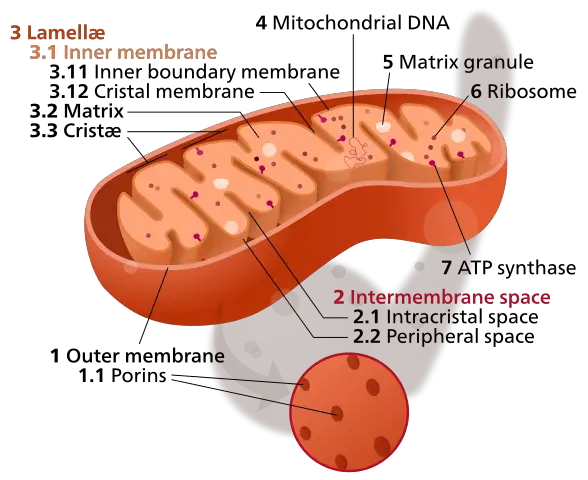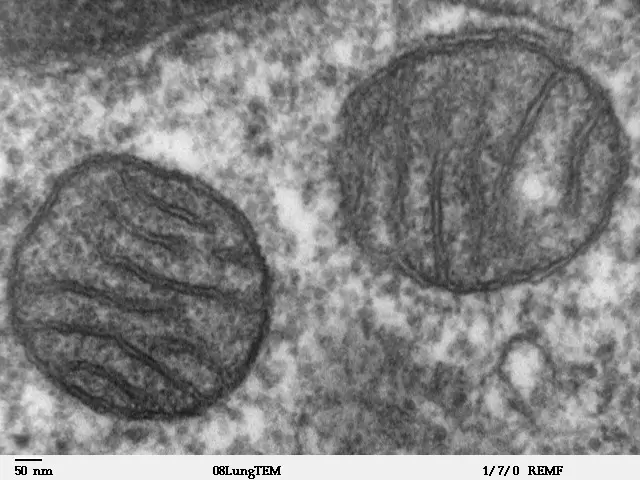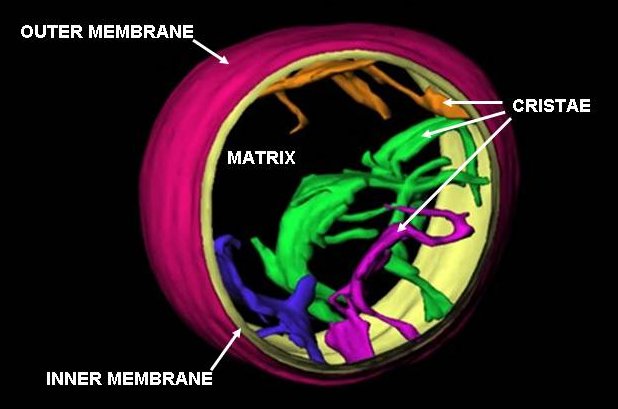What are mitochondria?
The majority of cells have components such as a cell membrane, cytoplasm, and a nucleus. They also contain mitochondria, ribosomes, and lysosomes.
The structures that exist inside the cell, such as the nucleus, mitochondria, ribosomes, and lysosomes are called organelles.
Mitochondria is a plural word; the singular form of the word is mitochondrion.
Mitochondria provides energy for the cell by metabolizing food and oxygen. Different kinds of cells can have different amounts of mitochondria, depending on the energy that they need for their functions.
More simple cells and single-celled organisms might only contain a single mitochondrion. However, more complex cells, like animal cells, which require a lot of energy to do their jobs, might have thousands of mitochondria within one cell.

How do mitochondria produce energy?
With energy production for the cell’s functioning being the most important process for mitochondria, they are often referred to as the “energy factory” or “powerhouse” of the cell.
There is a specific type of molecule that helps the mitochondria do their job, called ATP, which is an acronym for adenosine triphosphate.
This means that the molecule contains adenosine and three phosphate particles.
What the mitochondria does is produce ATP, so that it can be used throughout the cell. When adenosine triphosphate is used for energy, a phosphate particle is released, converting the ATP into ADP, or adenosine diphosphate (adenosine with only two phosphate particles).
The process of creating ATP involves the use of oxygen, in a system called cellular respiration. Therefore, cells engage in respiration, or breathing, just like we do.
The mitochondria gather oxygen to combine with carbohydrates (a nutrient found in many foods) to create the ATP.
In the process of combining oxygen with carbohydrates to create ATP, a chemical reaction is needed. This chemical reaction is facilitated by the use of substances called enzymes.

What is the structure of mitochondria?
Mitochondria have many specific components of their structure, including outer membranes, inner membranes, cristae, and a matrix. The outer membrane is like the cell wall of a cell, and creates a smooth shell around the mitochondria.
The inner membrane of a mitochondria is wrinkly, with many folds and dips in the surface. The cristae of mitochondria are the folds that are found on the inner membrane.
The purpose of these folds is to increase the surface area of the membrane, so that it can do more with less space.
Finally, the matrix of the mitochondria is the space in between the cristae, inside the inner membrane. In the matrix, mitochondria store their own proteins, ribosomes, and DNA.

Additional information about mitochondria
Although the primary function of the mitochondria is the production of energy, mitochondria also engage in other important functions for the cell, such as regulating metabolism, releasing heat, and controlling some of the flow of important substances in the cell such as calcium.
Just like ribosomes need to produce different proteins, different mitochondria will perform slightly different functions when needed. If a cell needs to reduce the amount of energy it produces, some of the mitochondria will die off.
Questions:
- What are mitochondria?
- What is the primary function of the mitochondria?
- What molecule is important in producing energy?
- What two things are needed to produce ATP?
- What are the structures of mitochondria?

Answers:
- Mitochondria are cell organelles that have multiple functions.
- The primary function of the mitochondria is energy production.
- Adenosine triphosphate, ATP, is important in producing energy.
- Oxygen and carbohydrates are needed to produce ATP.
- The structures of mitochondria include outer membranes, inner membranes, cristae, and a matrix.